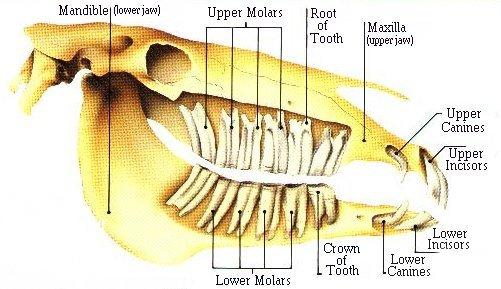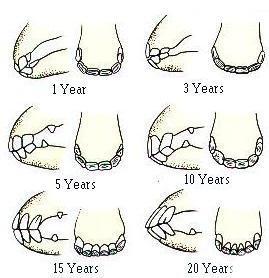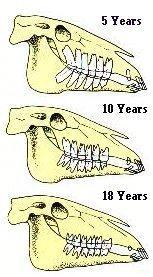Horses Teeth

Horses have particularly big, strong teeth, much more so in proportion to their size than in humans. This is due to their
diets, which cause them to need efficient mastication (chewing) to break the foods up so the digestive juices can process
the nutrients and they can be absorbed by the horse.
Domesticated horses need regular dental care to maintain proper chewing and comfort in their mouth. Their upper jaw is
larger than the lower which makes the teeth wear on a slant.
From constant grinding of foods can cause the back teeth to become very sharp and irritate the inner cheeks. Also, hooks
can form on the front and back of the rows of molars which, if not removed can result in the horse not being able to close
it's mouth.
The vet can file or rasp the sharp edges off. This might need to be done twice a year, and therefor a regular series of
checkups should be done bi-yearly to yearly.

As the teeth wear down throughout the horses life, the pattern can be seen on the surface of the incisors gradually changes,
giving a fairly accurate idea of the horse's age. The teeth also become more triangular as a horse gets older, giving another
clue to it's age.

The teeth continue to erupt from their sockets throughout the horse's life. The length of the crown in the gum shortens
and the roots develop with age, and only a small amount of tooth is left by the time a horse becomes elderly.

